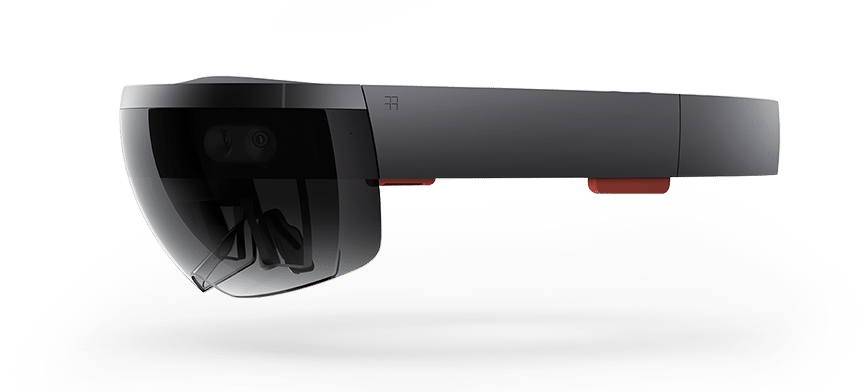
This is the last in a series of articles that examines how the so called Four Horsemen of Tech — Apple, Google, Facebook and Amazon — are positioned for augmented reality. Microsoft, the dark horse whose work with AR/MR brings it back into the race, represents the final stretch of the series.
After decades of dominance in the PC era, followed by a decade of inferiority in the smartphone era, Microsoft has returned to grace with positioning for the immersive era.
It can also be compared to Facebook: Driven to not miss the boat again with hardware that’s the dominant consumer touch point (smartphone), Facebook invested heavily for the next era (Oculus). Microsoft has done similar by building rather than buying. And its vessel is the Hololens.
This will position it with not only hardware but a software platform licensed to other headsets manufacturers; and tied into its foundational desktop operating system. Altogether, it achieves vertical integration — the same strategy by which its longtime nemesis Apple rose to power.
And it’s going to need that advantage to fight Apple. ARkit makes Apple the largest AR development platform overnight, which will be further emboldened by a rumored AR-centric iPhone 8. Apple’s biggest difference is a mobile strategy versus Microsoft’s goggles approach.

Mixed Metaphors
Carrying the above strategy forward, Microsoft has branded its approach as Mixed Reality. Seeming at first to be marketing jargon (which it partly is), this defines AR graphics that interact with physical objects in dimensionally accurate ways — basically SLAM.
Windows Mixed Reality (WMR) and Hololens will also stay true to Microsoft’s DNA with an enterprise focus. This will be a point of strength, anchored in Windows’ enterprise installed base. And enterprise overall will be a strong early market for AR, before consumers adopt en masse.
That early adoption is mostly due to the ROI story in functions like design and assembly. That in turn results from increased productivity, reduced mistakes and overall cost savings. And cultural resistance to glasses-based AR adoption (style, privacy, etc.) isn’t present in enterprise contexts.
One example is the Hololens-assisted Cirque du Soleil design process. Rather than lots of back and forth between remote designers, and building physical stage mockups, the production team visualizes stylistic changes dynamically and saves lots of time (see video below).

Virtualization
Though AR has lots of adoption and market size advantages, Microsoft isn’t ignoring VR. In fact, one component of WMR is an industry-leading positional tracking system. And that’s a key factor for VR advancement that the industry continues to agonize over.
As quick background, WMR has inside-out positional tracking, which eliminates the setup and cord-laden orientation of outside-in tracking systems like HTC Vive’s Lighthouse. WMR achieves this through computer vision to map surroundings, a key ingredient for mixed reality.
Microsoft has intelligently decided to utilize that asset by licensing WMR to third party hardware manufacturers to build sub-$500 VR headsets. Starting with partners like Acer and HP, this will accelerate the VR consumer adoption with price competition for capable mid-range headsets.

Vertical Challenge
Altogether, Microsoft is pursuing many paths to immersive technology. It’s vertically integrated by owning the hardware (Hololens), OS (Windows) and application layer (WMR). As shown historically by Apple, that approach can engender an elegant linking of hardware and software.
At the same time, it’s pursuing the traditional Microsoft model that licenses software to third party hardware manufacturers (think: Windows-based PCs). That misses out on the quality control and product design of vertical integration, but it has economic advantages in high margins and scale.
While pursuing both of these strategies, WMR all the while stays true to Microsoft’s DNA by playing to its strengths in enterprise applications. And the whole thing will be built on the massive installed base — in both consumer and enterprise worlds — of the Windows operating system.
Roll it all up and Microsoft is in a position to own the technology stack, accelerate its market penetration, and lower costs through economies of scale. This could place it in the best position among tech giants pursuing AR. In the ‘Four Horsemen’ construct, it just might be the dark horse.
For a deeper dive on AR & VR insights, subscribe to ARtillry Intelligence Briefings, and sign up for the free ARtillry Weekly newsletter.
Disclosure: ARtillry has no financial stake in the companies mentioned in this post, nor received payment for its production. Disclosure and ethics policy can be seen here.
Header image credit: Microsoft
